
15 minute read
Different Pieces but One Big Picture
Worship in Downpatrick Down Cathedral, the Mall “Entering the cathedral filled me with awe – I felt that I should be on my best behaviour.” We were given a tour of the Cathedral by Mrs Joy Wilkinson, the church warden. We were amazed to learn that during the medieval period everyone in the town of Downpatrick would have worshipped in the Cathedral - Irish, English, and Scottish alike. The reason for this was that there was only one kind of Christianity at this time.
The cathedral building was originally built by the Anglo-Norman lord, John de Courcy in the 1180s. He evicted the local Irish monks from the site and invited Benedictine brothers from Chester, England to establish a priory there. The cathedral fell into ruin after the dissolution of the monasteries act in 1536 but was rebuilt between 1797 and 1818.
Archaeologists found remains of an early Christian settlement and burials, and also earlier activity dating to the Bronze Age. On display in the porch are decorated stone fragments discovered in the graveyard.
The interior of the cathedral is very impressive with high ceilings, stained glass windows and a musical organ so large that it forms an archway to walk under. The congregation sit in individual wooden boxed pews. Although the boxes are free for anyone to use, families who worship there have their own favourite box in which they sit each Sunday.
The Cathedral’s baptismal font was recovered from a garden in nearby English Street. It is thought to be the base of 10th or 11th century high cross. We found out that one of the members of the Young Archaeologists Club, Max Crichton, was the 500th baby to be baptised in the cathedral.
Tradition says that St Patrick is buried in the graveyard, along with St Brigid and St Colmcille. A large slab of Mourne granite marks the spot. We discovered that many people visit the grave each year, some leaving tokens behind.
Today, worshippers in the Cathedral follow the Anglican liturgy. Music plays a vital role with a robed choir and sung services. The building is a place of worship but also an important part of our heritage.
14 Digging Our Faith Inside the Cathedral

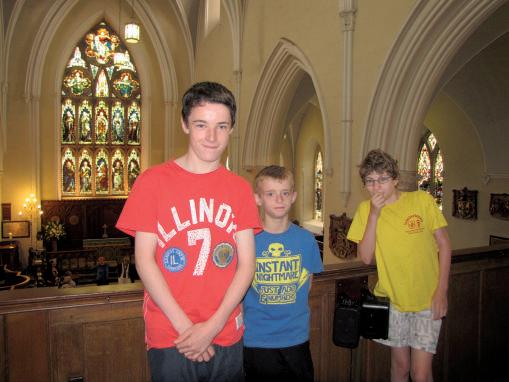
Up in the choir
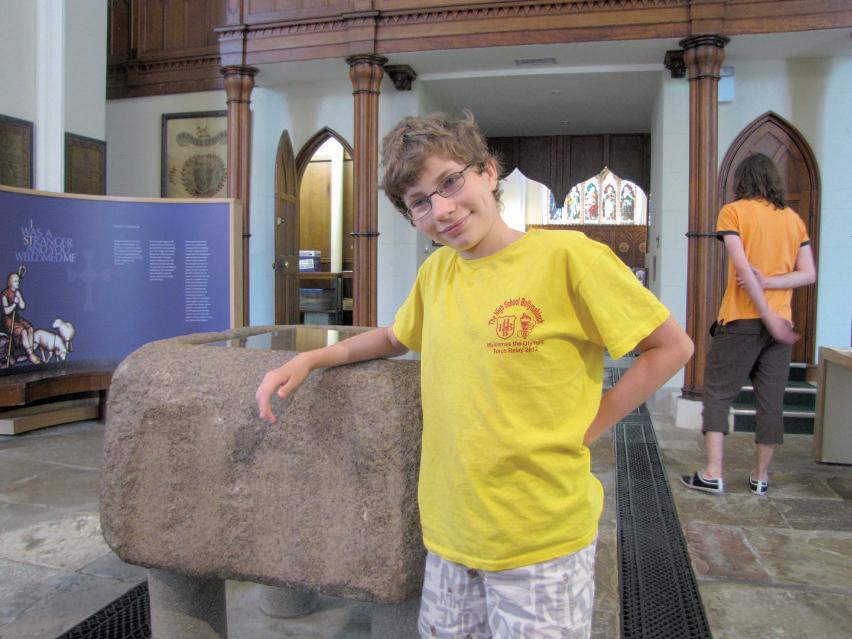

Max Crichton with the baptismal font in the Cathedral


Tokens left by visitors Stained glass window – Postcard in DCM Collection


St Patrick’s Grave – Postcard in DCM Collection

The organ – Postcard in DCM Collection
Digging Our Faith 15
DiFFerent PieCes But One Big PiCture
Worship in Downpatrick “We enjoyed seeing the variety of places to worship.”
St Patrick’s Roman Catholic Church, Stream Street
The first church to stand here was built in 1787. Before this, Catholics worshipped at a church in nearby Ballykilbeg, which was built in 1704. Tradition has it that mass was also celebrated at a barn in Saul Street and at a Mass house in Ballyvange townland. The present church was built in 1868, but was extended in 1990 to accommodate a growing congregation. Canon Rogan showed us lovely mosaics telling the story of St Patrick. Within the new extension is an ornate shrine dedicated to Mary, the Blessed Virgin. Unlike other churches in the town, a service, or mass, is said daily. People visit the church during the day to pray and light candles as an offering to God.
St Margaret’s Parish Church, Church Street
St Margaret’s Parish Church was built around 1580, after the cathedral was ransacked and left in ruins. The church is dedicated to Margaret, wife of King Malcolm III of Scotland, who was later made a saint. The church was later rebuilt in 1735 but the bell tower may be much older. Rev Burns allowed us to climb to the top of the tower. It was a tight squeeze for us climbing into the bell tower. At the top is a very large bell and we learnt that the tower’s roof had to be removed when it was installed! Compared to the cathedral, St Margaret’s Church is smaller and more inviting. The service follows a traditional format from the Anglican Book of Common Prayer each week, with recited prayers, bible readings, and preaching.
Baptist Church, Bridge Street
We were surprised that the church, built in 1861, was just a small house-like building. Inside we sat on ordinary seats in a large room with a fireplace. Pastor White explained to us that the Baptist church was evangelical and that this meant that their followers spread the “good news” of Jesus, as written in the gospels. In the Baptist Church, you can only be baptised when you are old enough to decide for yourself. This is called “believer’s baptism” and so no babies are baptised. The church building was originally built as a meeting prayer house and has no graveyard but makes use of the one in St Margaret’s Parish Church.

16 Digging Our Faith St Patrick’s Church at turn of 19th century – DCM Collection
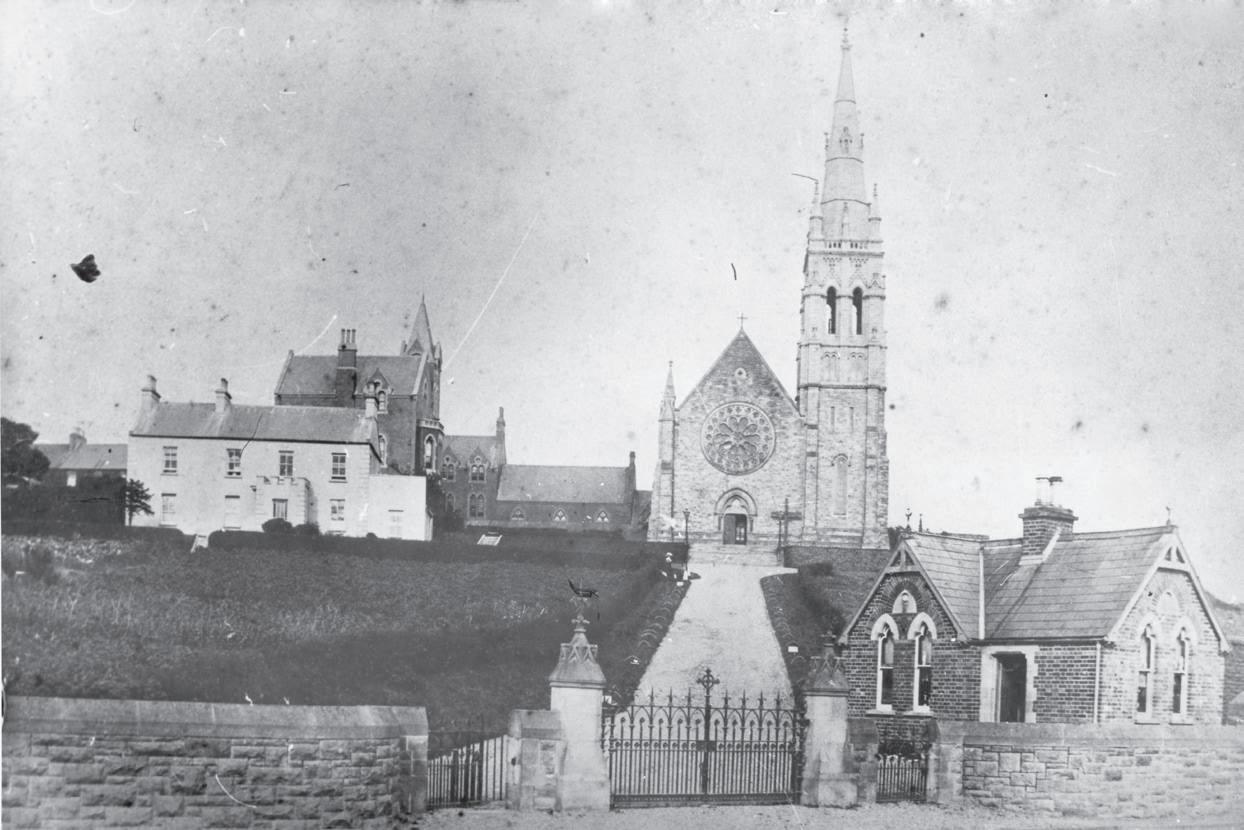
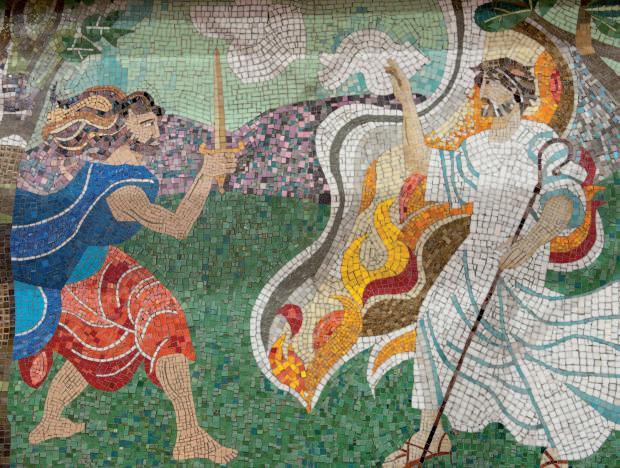
Mosaic of St Patrick as a boy being captured


Shrine dedicated to Mary, the Blessed Virgin, in St Patrick’s church
St Margaret’s graveyard YAC members inside the bell tower of St Margaret’s Parish church

YAC members outside the Baptist church
Inside the Baptist church
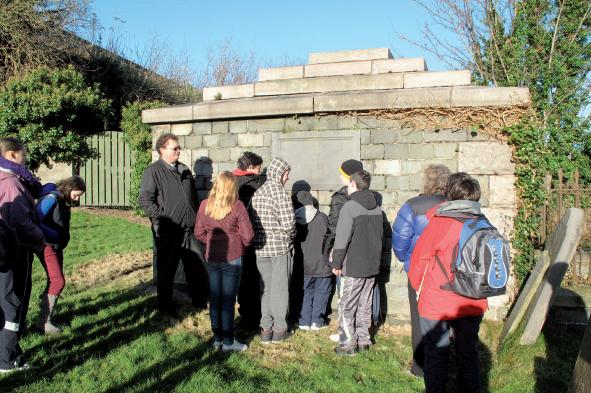



Digging Our Faith 17
DiFFerent PieCes But One Big PiCture
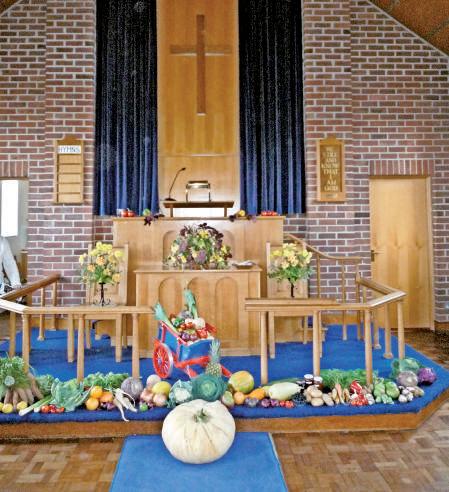
Worship in Downpatrick “We discovered that these places of worship share many things.”
Methodist Church, Saul Street
John Wesley founded Methodism and preached in Downpatrick six times. The first Methodist church in Downpatrick was built by Edward Smyth in 1777. He was the curate of Ballyculter but became Methodist after he met John Wesley and began talking about God in fields and barns as well as in church. The church was rebuilt in 1955 and unusually is faced in brick and has no bell in the bell tower. During the 19th century the Methodist congregation grew so much that another smaller church was founded in Church Street, and an Ebenezer Chapel of Ease was located off Irish Street. Nothing now remains of either of these churches. The service at the Methodist church is simple consisting of prayers, preaching, Bible reading, and, especially important to Methodists, the singing of hymns. There is a special area set aside for the children during service.
Non-Subscribing Presbyterian Church, Stream Street
The congregation, founded in the 1640s, is the original Downpatrick Presbyterian congregation. The first meeting house was in the Flying Horse area. The church at Stream Street opened in 1711 and was remodelled in the early 1800s. We learned that it is nonsubscribing because they refused to sign the Westminster Confession of Faith, believing that everything that was needed for faith could be found in the Bible. The building is T-shaped with a high central pulpit. This allows the minister to be heard clearly in each of the four galleries, without the aid of a microphone! A typical service has hymns, prayers, children’s address, readings, and a sermon. Twice a year they celebrate Communion in the traditional way when everyone sits together around long tables in the aisles.

Presbyterian Church, Fountain Lane
This Presbyterian Church is different from most others, as it has a central aisle and stained glass windows showing Jesus. Though the building is over 150 years old, inside they make good use of modern technology. A large screen displays the words of hymns for everybody to see. Worshippers celebrate Communion four times a year. Communion wine is offered to the congregation in small glasses that are carried in a special non-spill tray. We thought the Presbyterian Church was a lovely place to sit and contemplate.

18 Digging Our Faith 1
Celebrating the Harvest at the Methodist Church
2
Methodist Church

Kingdom Hall, Downpatrick
Jehovah’s Witnesses are Christians from all different backgrounds, across Northern Ireland and Worldwide. They try their best to imitate Jesus Christ and live by Bible teachings. They take their name from the fact that each of them volunteers their free time ‘witnessing’ or talking to others about Jehovah, the God of the Bible, helping anyone who wants to learn more. The Kingdom Hall is a simple building for worship and study, built in June 1985 by volunteers from across Britain and Ireland, in a single weekend! More info: visit www.jw.org or come along Thursdays at 7.15pm or Sundays at 10am.

3
Non-subscribing Presbyterian Church
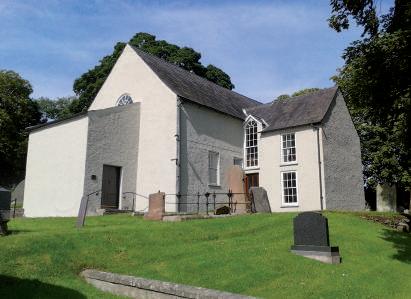
4
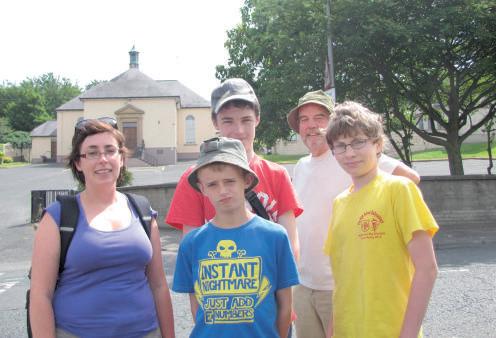
YAC member with the communion glasses and non-spill tray in the Presbyterian Church
7


The Kingdom Hall

Photo 1 & 2 reproduced with kind permission of Dr Brian Turner Photo 3 reproduced with kind permission of Rev David Steers 5
An original collection dish dated 1734 in the Non-subscribing Presbyterian Church.
6
YAC members outside the Presbyterian Church
Digging Our Faith 19

DiFFerent PieCes But One Big PiCture
Belfast Synagogue “We found out that the Jewish holy day, the Shabbath, begins on Friday and continues all day Saturday.” We learnt that synagogues are usually rectangular in plan but the Belfast synagogue is unusual. It is circular and the ceiling is shaped as the Star of David. The points of the star represent the tribes of Israel. The synagogue, built in 1964, replaced the previous synagogue, built 1904, in Anthony Street near Carlisle Circus. Before this, prayers were held in the congregation’s houses.
Those attending the Synagogue on the Shabbath, a day of prayer and rest from work, are expected to walk. It begins with the lighting of a candle, and then coins are dropped in a tzedakah box and given to charity. We were surprised to learn that during prayers, the women sit separately at the side. Women also cover their head. We did this too when we visited to show our respect for the beliefs of others The rabbi leads the congregation in prayer and the service can last up to three hours. During prayers men wear a skull cap, kippa, and a white prayer shawl, tallit.
We noticed that the altar faces east, towards the Temple in Jerusalem. Behind the altar is the Ark, in which the Torah is placed. This is a holy book, which contains the five books of Moses, written on scrolls. These are wrapped in material which is tied to a piece of ornate bright metal, much like a breastplate. This is to represent the breastplate worn by the rabbi in the Temple at Jerusalem.
Above the doors of the ark are written the Ten Commandments. On the wall is the Menorah; this holds nine candles which are lit throughout the ceremony.
On our visit in April 2013, we noticed a calendar on display in the synagogue. We discovered the Jewish calendar began the day the Jewish slaves left Egypt, 5,773 year ago. So for Jews the year is 5,773 and not 2013, which is 2,013 years since the birth of Christ. New Year in the Jewish calendar begins in September.

20 Digging Our Faith Women are required to cover their head
Design: Pic 2

Prayer book
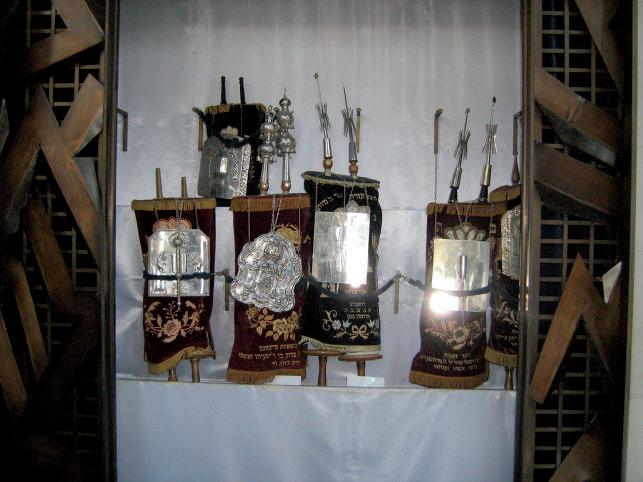
The Torah scrolls

The Ten Commandments The Menorah

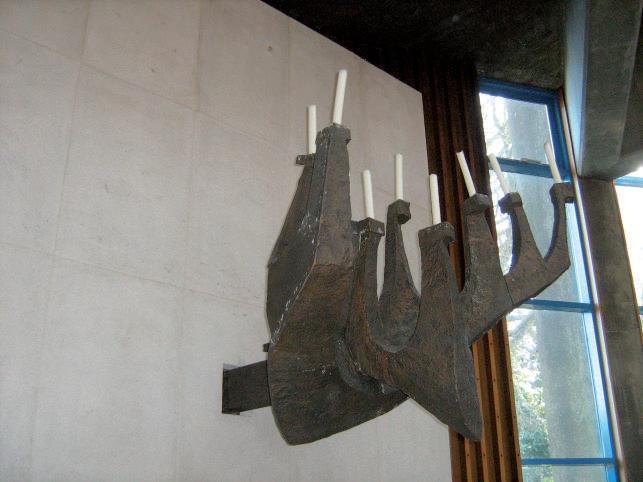

YAC members in Belfast synagogue with Neville Finch
Digging Our Faith 21
DiFFerent PieCes But One Big PiCture
Belfast indian Community Centre “We thought the Indian centre was so beautiful and colourful.” The Indian community bought this former church in 1981. Before this the community met in each other’s houses and hired halls for festivals. In 1981 there were about 200 Indian families in Northern Ireland; now there are 5,000.
On our visit we learned that Hindus believe in one divinity, a supreme being who takes the form of many gods and goddesses. In India, people worship in a temple called a mandir. Before entering, a bell is rung. The sound makes the temple pure and focuses the mind on prayer. It is rung three times, as Hindus believe that the universe has three levels.

Although the community centre is not a temple, it does have a room set aside for worship. You are not allowed to wear shoes here. At one end of the room are statues of different gods and goddesses. They are brightly coloured and richly decorated in fine material, beads, and sequins. In the past, statues were made mostly of stone but marble, copper and silver are also used. In this room people pray to the gods and goddesses. During prayer, pooja, a small lamp, diva, is lit and a bell is rung. Most Hindus have a shrine in their own house, at which to pray. Hinduism uses colour, food, and smells to encourage people to give more attention to the gods.
A bindi, or tilak, is the red spot worn by women. It is a mark of God’s blessing and marks the energy centre of the body. In past times, wives wore it to send their good will to husbands who had gone to war.
On the wall in the prayer room was a swaztika, an important and very ancient symbol in Indian culture. It is designed to depict harmony in all directions, as it forms a spiral drawn together. The four dots within in it represent all within the world.

We enjoyed trying on a sari, a traditional form of Indian dress. It is amazing that it is just one long piece of cloth, folded in a special way.

22 Digging Our Faith 1
Indian Community Centre, Belfast
Statues of the gods 2
3
Hindu god 5
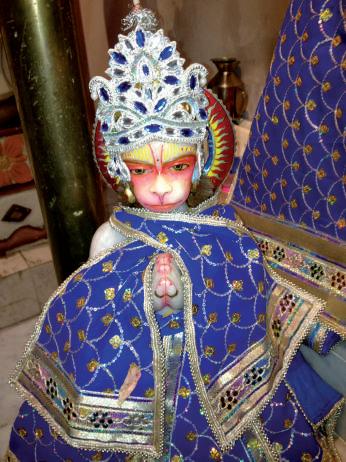
4
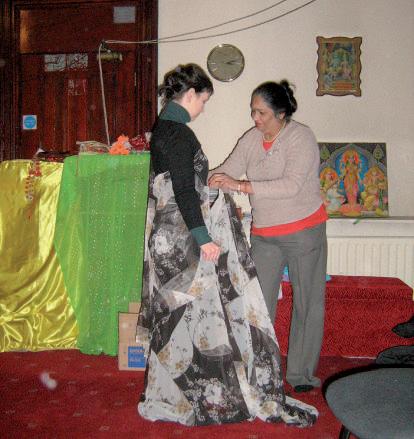
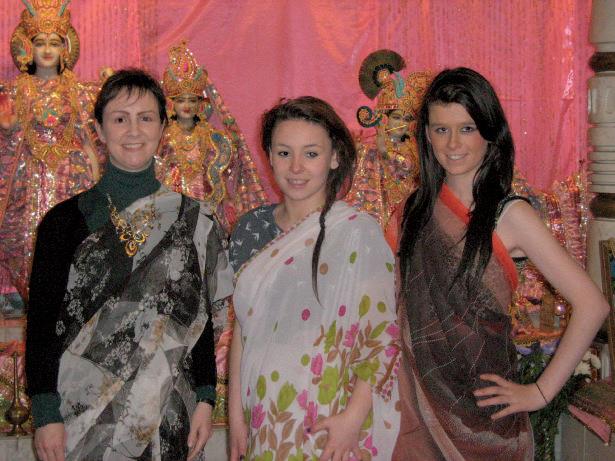
Wearing the Sari

Photos 1 & 2 reproduced by kind permission of the Belfast Indian Community Centre Trying on the Sari
Getting dressed up
6

Digging Our Faith 23
DiFFerent PieCes But One Big PiCture
Belfast islamic Community Centre “We learned that Islam is all about being a good person.”
The Islamic Community Centre is not what we expected. From the outside it is an ordinary house on a quiet street. Inside it is a school, a community centre and a place of worship. The centre hosts marriages, funerals, and festival celebrations such as Eid and Ramadan.
We had to remove our shoes upon entering the building as this is a tradition in Muslim countries. We could see the children in the school room. Here they are taught Arabic and Islamic studies. We were brought upstairs to a large open room and were given a talk on Islam and the Muslim way of life.

We were told that Islam is a way of life and not just about attending festivals. There are five pillars, or laws, which Muslims are expected to live by. These include giving money to the poor and attending the five daily prayers at dawn, mid-day, late-afternoon, sunset and nightfall. Each person has his/her own prayer mat which is placed facing Mecca. This is a city in Saudi Arabia where the holy mosque is located. We learnt that each prayer mat contains a flaw in the design. This is put there to remind us that only God is perfect.
The Islamic holy book is called the Qur’an. It is written in Arabic, the common language of all Islamic countries, and contains no pictures. The Qur’an must never be placed on the floor as this is considered disrespectful.
We learnt that there were only six Muslims living in Northern Ireland in 1970. It is estimated that today there are over 7,000 Muslims. Most of these people come from war-torn countries and seek a peaceful existence here in Northern Ireland.
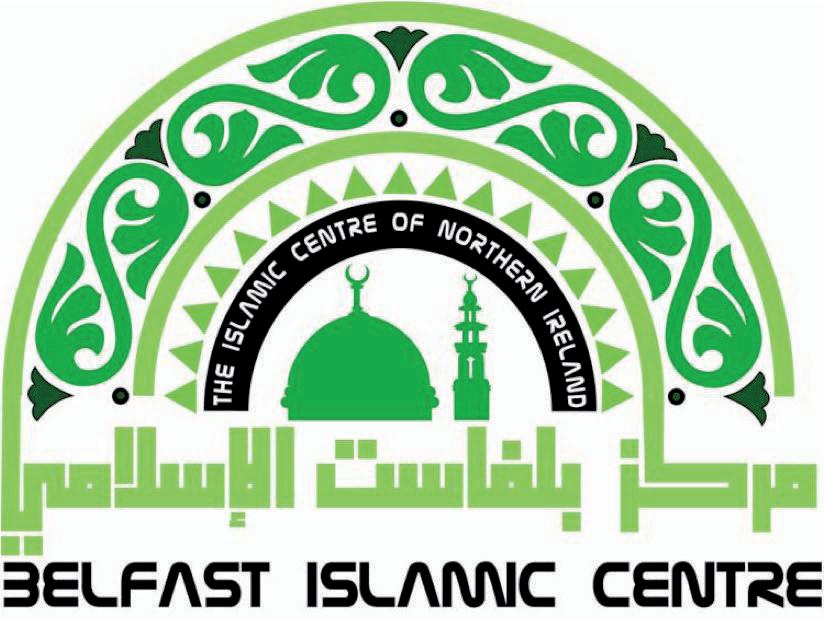
24 Digging Our Faith

1

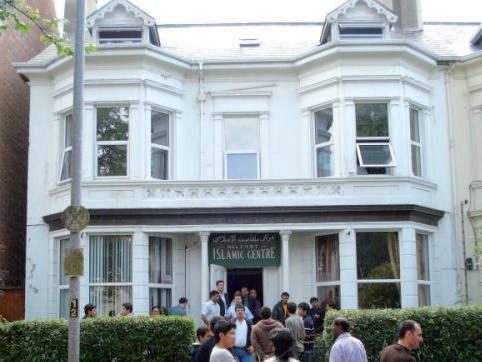
The Belfast Islamic Community Centre At prayer during a festival 2
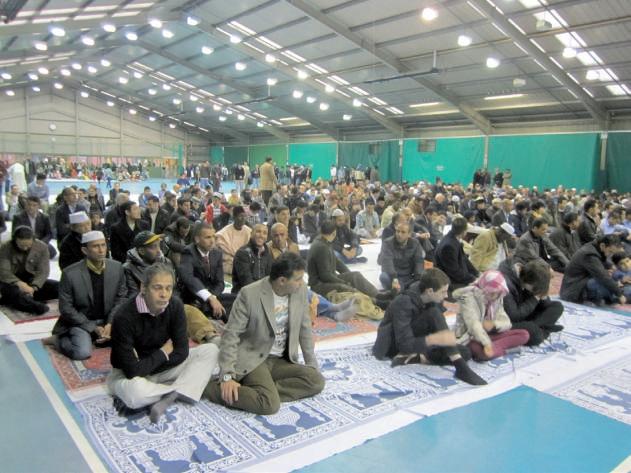

Digging Our Faith 25




